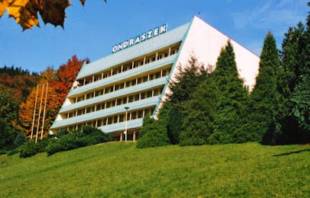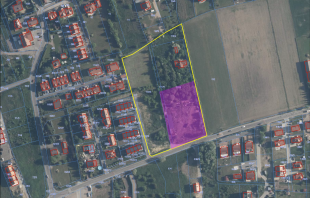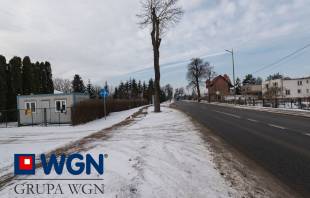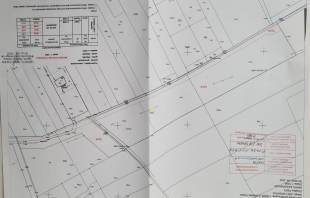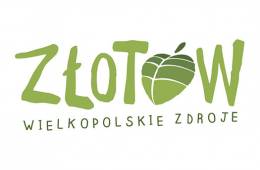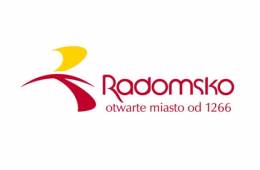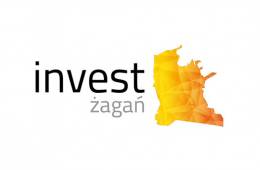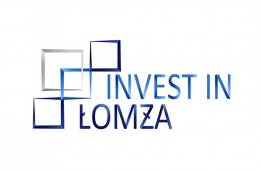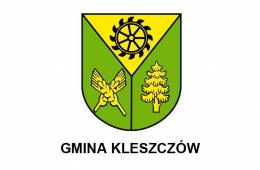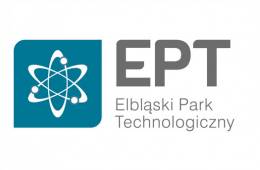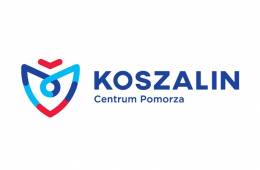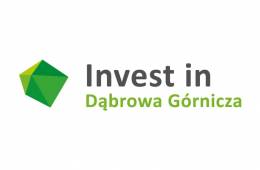In 2015 Poland will have to pass an important test. For several years we have been climbing the rankings of investment attractiveness and we dominate the commercial real estate market in Central and Eastern Europe. Can we stay at the top in 2015, will we start to compete against the countries from Western Europe, or will we lose to such competitors as Romania or Turkey?
Poland will have to face a lot of challenges in 2015. One of them are presidential and parliament elections, which may influence the inflow of foreign capital into Poland, since Polish political stability is very important for investors. The next one will be the distribution of the EU funds for the years 2014-2020, whose main purpose is to raise the level of innovation in Poland. The commercial space market may experience a boom in terms of the number of transactions, but there is a fear that a speculative bubble or a crisis on the office market may occur.
Commercial real estate and investment areas
There will be a slight stagnation on the commercial space market, and the already planned spaces will be successively adapted to the market requirements. It is noteworthy, however, that at the end of the 3rd quarter of 2014 approx. 800,000 sq m area of shopping malls with the planned date of opening at the end of 2016 were still under construction, which means that within the next two years the commercial space market may increase to 11 million sq m.
“Due to the increase in competition, developers are going to adjust their projects to the changing situation on the market. The objective investment areas of IKEA in Lublin have been reduced, the same is true for Galeria Metropolis in Poznań (Echo Investment), or the project Plac Vogla (Ghelamco) in Wilanów in Warsaw,” points out Dominika Jędrak, Head of Research and Consultancy Services, Colliers International.
It seems also that the developers of the commercial areas will again become interested in large cities, especially Warsaw, where the suburbs, such as Wilanów, Białołęka or Targówek will reach the peak of their development. On the other hand the interest in smaller regional cities will decrease due to the high market saturation. The interest in commercial streets should not change, especially considering that ever more cities implement a special policy on the development of the main commercial streets. Also the brands that enter the Polish market are interested in such locations.
“The interest of foreign brands in our commercial space market, despite high market saturation, is the result of Poland’s being the leader of the retail market in Central and Eastern Europe. In Poland there is still enough space for new shopping malls and commercial streets, which may and should be an alternative and simultaneously complement the offer of shopping malls, just as it is with our western neighbors. The foreign brands, more than Polish companies, are eager to invest in commercial streets, which is probably the result of their experience on western markets,” says Joanna Mroczek, Director of Research and Marketing Departments at CBRE.
There might be considerable fluctuation on the office market, especially in Warsaw where some say there has been a crisis of excessive sale recently. At present there are almost 700,000 sq m of office space under construction in the Polish capital, which will translate into high supply also in the coming two years (approx. 300,000 sq m annually). This means that for the next two years office space in Warsaw will probably exceed 5 million sq m.
“The predicted high supply of the office space in the next two years may lead to a further increase in the number of unused buildings. However, starting from 2015 we can expect that more space will be rented. The key reason is that the market goes through cycles and that between 2016 and 2018 a lot of contracts signed in the years 2006-2008 (10-year contracts) and 2011-2013 (5-year contracts), that is when the market was booming, will expire. At the same time we expect further consolidation and optimization of the spaces, which is a result of many lessees introducing new solutions in the area of work organization. The outcome will be smaller offices, which will decrease the sale of the available office space,” says Katarzyna Lipka, Associate Director of Research and Consultancy Services, DTZ.
Prospects look good for storage and logistics space market. The number of speculative projects is increasing, which suggests that developers expect a further increase. The Upper and Lower Silesia should still enjoy most interest due to a short distance to Germany and the Czech Republic, as well as Poznań, which uses the hype caused by the investment of Amazon. The market development in Eastern Poland will depend on the economic and political situation in Russia and Ukraine.
This will be an interesting period for the transaction market. The appearance of new players on the Polish market, an improvement of the situation in Western Europe and the appearance of new financial serivces should cause a lot of activity on the market. Additionally, in 2015 the transactions on the commercial space market may become more national.
“In 2015 we expect the sale of the assets held by Polish investment funds, which continue to liquidate their portfolios. We also forecast the development of domestic investment products related to small retail space and office blocks. On the other hand, the large oversupply of office space in Warsaw may cause that not fully rented buildings will not be bought,” says Łukasz Maciak, Capital Markets Director, DTZ.
As in previous years, in 2015 investors will be most interested in real estate with clear legal status and an attractive location. That is why it is so important to deal with the issues related to perpetual usufruct or the pace of making new area development plans.
“Despite high supply the demand for investment areas has not been fully satisfied. There is a lack of real estate that would meet the developer requirements. An unfavorable location or legal condition of the real estate that make it impossible to develop the land are the main causes why some land areas have not been purchased.
Investors are looking for markets where the prices of apartments, lease and demand guarantee a quick return on capital. With housing projects whose preparation is not risky we expect an increase in prices and readiness to enter cash transactions. In single cases the investment areas for housing development will sell like hot cakes,” summarizes Emil Domeracki, Senior Associate at Land Department of Colliers International.
The coming years will be very busy also for state real estate agencies. The Agricultural Property Agency still has 100,000 ha of investment area. So far this land has been sold at a rate of approximately 1,000 ha annually. PKP has similar resources, parcels covering 100,000 ha, 10,000 ha of which have a high investment potential. In the coming years the sale of the real estate should bring the Polish Railways PLN 800 million. The Military Property Agency plans to generate an income of PLN 130.7 million from the sale of real estate in 2015 alone. Almost 560 properties (put out to tender) with a total value of approx. PLN 630 million are to be sold.
Good prospects for SEZ
After an exceptionally good year 2014 we can expect that special economic zones will return to their normal level in the next one.
“In 2015 the newly changed national regulations on special economic zones will probably be effective (actually it is only the question when the amendment to the act will be passed). Apart from the act itself also the orders on the state aid in the zones and the requirements that must be met to incorporate private land into the zones have to be amended. The order governing tenders and negotiations is still being prepared. This means that in 2015 permits will be granted again as usual. The zones remain one of the crucial areas attracting investors, especially the big ones whom the new EU regulations offer little help elsewhere,” says Marek Sienkiewicz, Manager in the Special Economic Team at Deloitte.
In 2013 the operation of the zones was prolonged; however there has been little interest from the government to prolong it further or to decide on indefinite operation of the zones.
“The SEZs will operate only until 2026. So the faster an investor starts business in the zone, the more time he will have to take advantage of the tax release. The requirements on the investment value and the number of jobs required for a given facility to belong to a special economic zone have been temporarily reduced by 30%. This may encourage more companies to enter a zone next year. What also might lead to such a decision are the rumors about the decrease in the state aid in the zones (allegedly from January 2017),” adds Marek Sienkiewicz.
Because the government order that allows granting permits in accordance with new regulations will become effective only at the end of November, not many investors will have a chance to receive a permit by the end of 2014 and most of them will apply for it in 2015.
“The information provided by the zones show that now there are 70 investors interested in the operation in a SEZ,” says the Minister of Economy Janusz Piechociński.
We should not forget that with over 430 permits granted in 2014 the next year will be a period when those investments will be realized. This means that the verification of how much the investors were really interested in the new projects and not just in getting the permit “as a reserve”, without any tangible investment plans.
“For the past 5 months of the year 2014 a lot of investment projects were prepared, which will be implemented in 2015,” claims Michał Sikora, consultant Land, Technical and Special Economic Zone Specialist, Cushman & Wakefield.
“In 2015 we expect large investments; we have just finished drafting another application for the expansion of the Cracow Special Economic Zone. It looks good,” says the president of the Cracow Special Economic Zone, Wiesława Kornaś-Kita.
Foreign Investments: BPO will not slow down, large interest in R&D centers
Let’s hope that the investments will stay at their current level next year. The crisis in Ukraine may cause that a part of the investments planned there will be realized in Poland instead. On the other hand, the prolonged conflict may discourage foreign investors from investing in the Central and Eastern Europe.
At present the Polish Information and Foreign Investment Agency (data as of 2014) is handling 164 projects that may be carried out in the next years. The total value of those projects is EUR 3199.09 million, and they may create 35,345 new jobs in the future.
The leader among those projects is the United States. The value of 53 American projects is EUR 1018.45 million and 8315 new jobs. Germany ranks next with 26 investments valued at EUR 400.15 million. All the projects carried out in Poland will create 6405 new jobs. French investors take the third place. Currently PIFIA is handling 12 French projects with a total value of EUR 198.7 million and a potential to generate 3606 new jobs. Next there are British investors with 10 investment projects handled by PIFIA (EUR 88.3 million, 1714 new jobs). Further on there are investors from Korea with 8 projects and India with 7 projects.
The most popular sector is BPO – 38 projects (total value: EUR 37.75 million, 11555 new jobs). Next there are: automotive industry (34 investment projects, total value: EUR 624.25 million, 7580 new jobs) research and development sector (14 projects, total value: EUR 57.2 million, 1766 new jobs), aeronautics (12 projects), timber industry (9 projects) and electronics and ICT – 6 projects each.
According to the data provided by PIFIA, Poland will continue to develop in the area of shared services and research and development centers.
“The investors are increasingly interested in sectors based on know-how such as BPO, R&D or ICT services. We are using this chance vary well and becoming a European hot spot of modern business services and a telecommunications hub for our western and northern neighbors. This year’s Tholons ranking shows that Cracow, Warsaw and Wroclaw, as outsourcing centers, have no competition in Europe. Over 56% projects handled by PIFIA are investments in intellectual businesses, research and development and scientific investments rank third in the portfolio of the Agency. In Central and Eastern Europe there are about 1100 outsourcing centers, 470 of which are located in Poland. The sector grows annually by the average of 20%. By the end of 2015 the estimated employment in the sector will have reached 150,000 to 170,000,” says the Vice President of the Polish Information and Foreign Investment Agency, Monika Piątkowska.
“The development forecasts look promising. 9 in 10 investors declare a further increase in the number of employees within the next 2 years. ABSL forecasts that by the end of the next year there will be 160,000 people employed,” adds Janusz Górecki, Head of Business Analysis Unit at ABSL and ABSL report coordinator.
“Modern business services, especially those more advanced, such as handling international investment funds, may become one of the most important and recognizable Polish export products in the next 3-5 years. In the short run Poland has a chance to become a real European hot spot with the largest number of centers providing strategic services for global business,” says Jacek Levernes, President of ABSL and Member of the Board of Directors of HP Europa.
In the long run Poland may also attract investors from Asia. At the end of 2014 it was visited by the representatives of the investment fund China Investment Corporation, with a shared capital of USD 200 billion. The Chinese investments in Poland may be favored by the inauguration of the Permanent Secretariat for Cooperation between China and Central Eastern Europe Countries in Warsaw in November. Its primary interest is investments.
“All countries in the region are interested in an increase in Chinese investments. We are most interested in those which create new jobs and introduce new technologies and thus make the economy more innovative,” said the Vice Premier, Minister of Economy Janusz Piechociński.
“I hope that within a few years the value of investments (in the region of Central and Eastern Europe) will reach USD 500 million,” said Li Dianxun, Director General of the Chinese Investment Promotion Agency (CIPA).
Focus on innovativeness
In the coming years Poland will have to concentrate a lot more on various aspects of innovativeness. As far as infrastructure is concerned, less EU funds will be provided for „standard” development of the investment areas and more for innovative infrastructure, the support of technology parks or innovation centers. Return-oriented support in the form of low-interest loans will become increasingly important. Local government will also have more influence on the distribution of the EU funds as 40% of the money will be managed by local authorities (in the years 2007-2013 it was 25%). The most supported region will be Eastern Poland, based on a special program.
The development of innovativeness in Poland will also be supported by the Industrial Development Agency. Between 2014 and 2020, pursuing the new strategy, the Agency will spend PLN 1.3 billion to support innovativeness. One of the new key services provided by ARP S.A. will be the Innovation Broker, a technology transfer platform. Its main purpose is to connect providers and recipients of innovation to support commercialization. In the database of the Innovation Broker there will be information on available technologies, patents, licenses, and possible range of their applications, as well as innovation needs of companies. The Agency will also cooperate with small and medium-sized businesses. Especially for this cooperation a new company was started - ARP Venture.
“Poland is the fourth least innovative country in the European Union, including other countries that went through a political transformation 25 years ago. It is time to change that,” says Aleksandra Magaczewska, President of ARP S.A.
Next year there might be an investment boom in the area of renewable energy. A new bill on renewable energy, which had been prepared for three years, was finally passed on to Sejm. If everything goes as planned, from 1 January 2016 the system of green certificates will be substituted with an auction model. Although the new system is not considered bad, most of the currently prepared projects will probably fail to meet the requirements that would give them the support of the auction model (the preparation of a project alone together with getting all the necessary permits take approximately 5 years). Therefore there is a chance that many companies will want to start production before 2016 so that their projects are still under the green certificate system.
“The survey that the report „Wind power engineering in Poland in 2014” is based on shows that 38% of the industry investors intend to carry out their projects as soon as possible to use the current support model,” says Wojciech Sztuba, Managing Partner at TPA Horwath.
Polish economy must be well prepared for the challenges of the year 2015 and the following years. Our advantages, such cheap workforce, lose their meaning in favor of such requirements as flexibility and innovativeness. We cannot afford not to take advantage of foreign investments when our competitors, such as Romania, which is already being compared to Poland in terms of its investment potential, or Turkey are becoming stronger. On the commercial real estate market Poland has almost attained the status of a mature market. Apart from obvious advantages, this also means that now investors will start looking for more prospective markets with higher returns on investment. Hence it is necessary to minimize the downsides, such as insufficient number of area development plans and the issue of perpetual usufruct.
(fot. materiał prasowy)





















